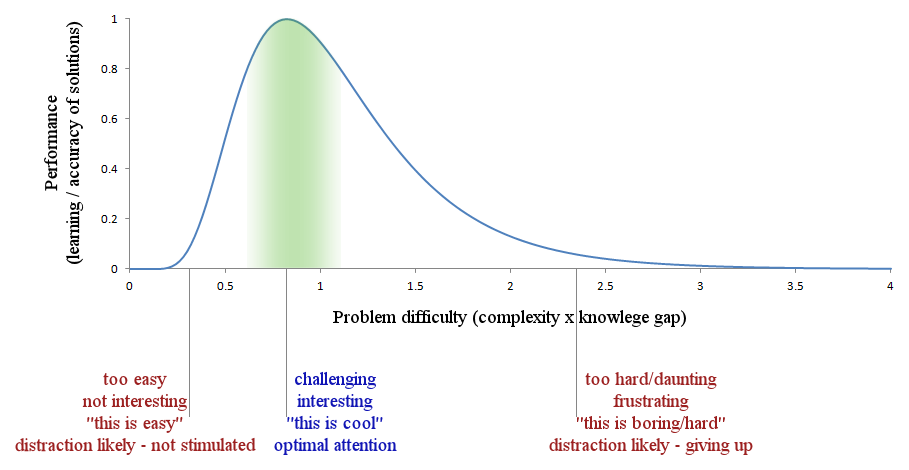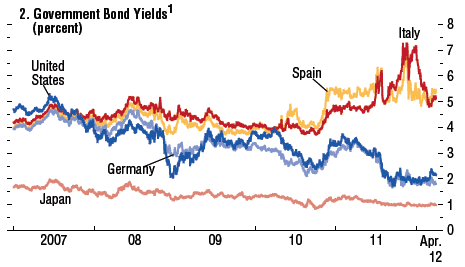I've been mulling for a while now about the factors that make some people like maths and some people hate it, for some people it comes easily, for others every step is a struggle. I have come to believe that nearly all people are capable of mathematical thinking, but that external factors affect how well they can put this into practice.
Consider the following: a 16 year old student will be very familiar with basic addition and subtraction. What would happen if you assigned 100 problems of this very easy difficulty? Would he get a perfect score? I very much doubt that he would. I have often observed that highly capable students are prone to "silly mistakes", nearly all of which are incorrect addition or subtraction. In the past I put this down to a feeling of ease or simplicity - the student doesn't properly respect the need for vigilance in these simple matters because the difficulty is trivial. They assume they they will not make any mistakes, even though they often do and that these mistakes are just as damaging to the final answer as forgetting how to solve quadratic equations.
Recently I have broadened this conception and done a little research which has been most enlightening. Before I give you my full theory, let's consider a different problem.
The same student as before is not at all familiar with matrices. Now imagine he were asked, without much theory, but just enough to satisfy the teacher that he "should know" how to do it, to find the matrix inverse of a 3x3 matrix and multiply it by the original to produce the 3x3 identity matrix. Most people would not be able to do that even if all the correct theory were right in front of them. You must slowly be intriduced to the fundamentals of matrix multiplication, the meaning of the determinant, indentity matrix, matrix inverse and so on, and at that point he may be asked to combine all those pieces of knowlege to solve this particular problem. This is a perfect case of "too hard" - the problem is tractable but too much is expected of the student. He doesn't have the necessary framework and to ask him to develop the framework as he is answering the question will result in frustration, distraction, boredom and, if the task is difficult enough, the student will give up.
Now the third, "Goldilocks" case: the same student, having knowlege of trigonometry, is asked to determine the volume of, say, a tetrahedron in which the sides are length
l. The student knows everything necessary to complete the problem, but has to apply it in a way he may not have done previously. He feels energised and confident that he can solve the problem, and does not become bored or frustrated but solves the problem flawlessly.
If you hate mathemathics the third scenario may seem remote or unrealistic, but I hope that what is to come will change your mind.
What struck me when I considered the above three situations is that it is very similar to a
curve I had seen before - one to which I linked on this very blog. If you scroll down in that PDF you will see a curve that shows the relationship between speed and concentration. As you can see at low speeds performance is low, and it increases with speed up to a point, after which it declines again. The fundamental idea has been known in Psychology for about a century and is called the
Yerkes-Dodson law, after the authors who developed the theory. Personally I believe that the curve should look like some sort of log-normal curve, but the essential thought is there. There is a zone of optimal stimulation or
arousal (stop giggling) which produces the best performance, and movement of the stimulus either way will decrease performance. I believe the same is true for mathematics - if the problem is too easy or too hard, you won't learn much and your answers will often be wrong. If the problem is just the right difficulty, you will get the most correct answers and feel the most stimulated. You may even enjoy it. Believe it or not there are people who enjoy mathematics, and my model predicts that they will be skilled at knowing their "zone" and staying within it.

The general idea
So, now that we know this, how does it help us teach and learn mathematics? Firstly I am going to assume that the precise shape of the curve is immaterial. It is enough to know that the peak exists and that straying too far from it will impair learning.
The teacher's job, then, is to find out where the student's zone is and shepherd him in that direction. This is already practiced to a limited degree in the classroom - students who quickly grasp the current topic are placed in accelerated or advanced groups so that they don't get bored. Students who struggle with math are often placed in classes where the problems are easier. While there is some sense to this I believe it misguided. The assumption is that some students have a peak which is shifted more towards the "hard" end, and these are placed in the accelerated class, and some have a peak shifted to the "easy" end, and these are placed in the - well, let's face it - the dumbed down class.
However, this is not the teacher's only job. Current education models force the teacher to plough on with material even when significant portions of the class don't understand it. Separating the students by their ability is a bandaid fix for this situation. It would be far more beneficial if the underperforming students' peaks could be shifted to the right. I believe the way to accomplish that is not to teach them mathematics but logic and problem solving. These are mental tools essential for mathematical learning and yet few schools make any serious attempt to teach them. The results are obvious - some gifted students somehow end up with a decent logic and problem solving framework (perhaps those with high intelligence can simply work it out themselves without being taught?), and shoot ahead, while most of the others can barely add 2x + 2x.
To my mind this leads us back to
Classical Education in which logic is taught before complex mathematics. Although most students cannot be redirected easily on to the different path that Classical Education takes, they can certainly be taught the basics of logic and problem solving required to learn and enjoy mathematics.

